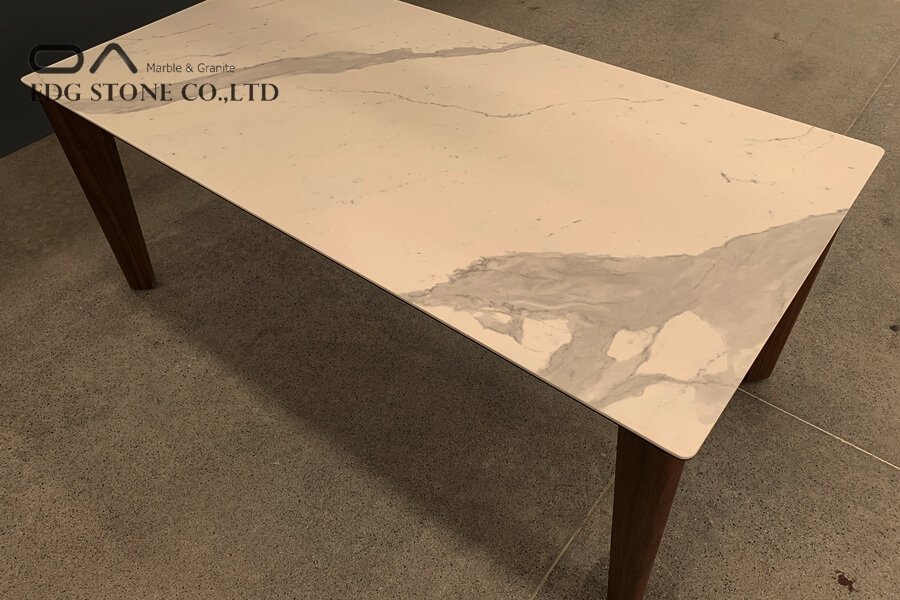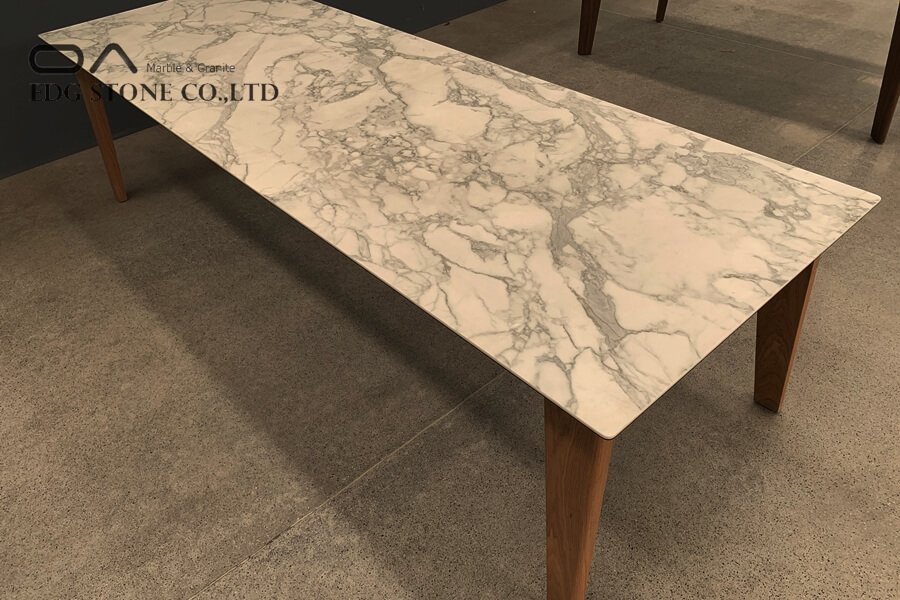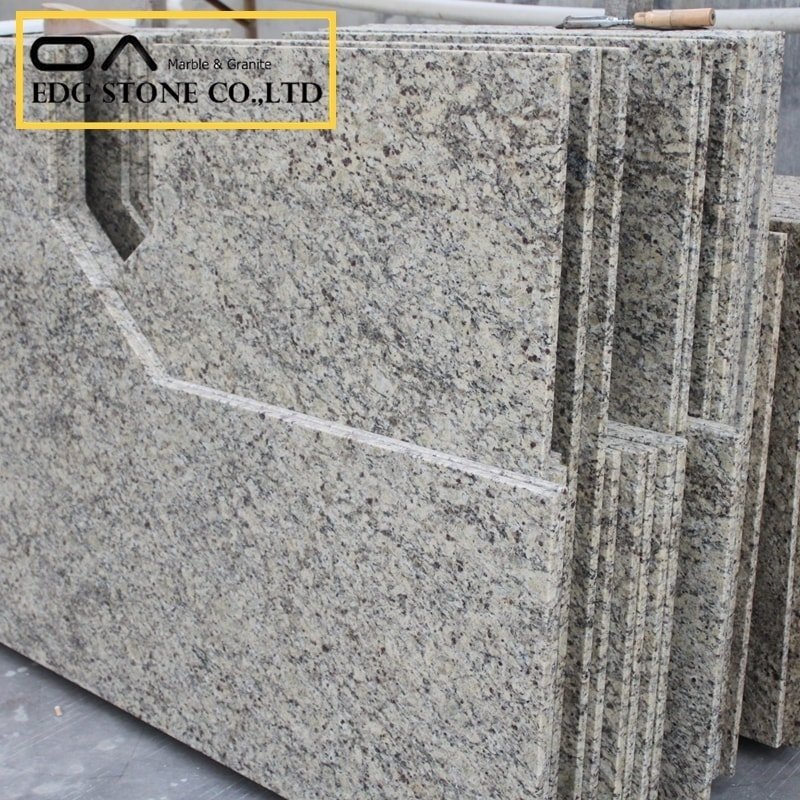As an artificial material imitating natural stone, the sintered stone is very popular in the market at present. The sintered stone has a price advantage in imitating high-end marble, and it has physical performance advantages compared to marble when used in some watery and oily environments. Therefore, it has great prospects as a kitchen countertop. Today we will take a look at the general practice of using slate for kitchen countertops. There are two main ways to make the sintered stone kitchen countertops.
Conventional the sintered stone countertop practices
The first one is the same as the conventional quartz stone countertop, the front hanging edge touches a 45-degree angle and turns a 45mm right angle. This way is the same as our regular way. After the water barrier is installed, make a beautiful seam between the water barrier and the wall.
Second, the position of the front hanging edge of the sintered stone countertop is directly the thickness of the single-layer slate, and it is no longer necessary to turn 45mm at a right angle of 45 degrees. The backstop is the same as the first one. This approach is more simple and beautiful than the first approach. It’s just that this method requires the cooperation of the base cabinet because, in this way, there are obvious requirements for the height of the base cabinet and the height and position of the cover of the door panel of the base cabinet.
The practice of the sink can be done on stage, in Taichung, or under the stage. There is no difference, it mainly depends on the needs of customers.
Therefore, the main difference between the sintered stone for kitchen countertops and quartz stone for kitchen countertops is that the processing method of the sintered stone is single, and more complex modeling and processing cannot be done. Especially the way of grinding the surface of the sintered stone.
For now, among the two ways of making the sintered stone countertops, the second way is more popular with young customers, and the first way is still a lot of choices.









